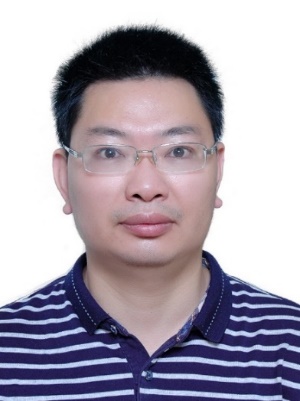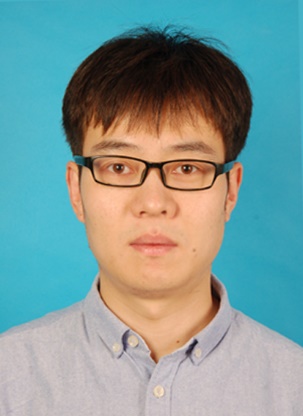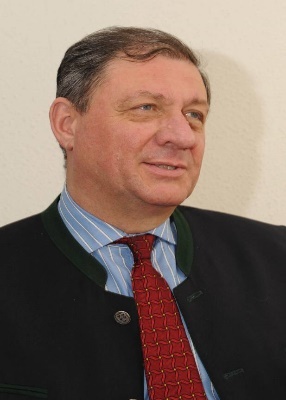(一)
 报告时间:6月23日(星期四)14:30
报告时间:6月23日(星期四)14:30
报告地点:信息楼99905银河官方网310报告厅、腾讯会议(ID: 555-2655-9115, 会议密码:220622)
报 告 人:袁小芳,湖南大学教授
报告题目:智能驾驶汽车三维路径规划方法研究
内容简介:在传统的汽车领域,通常考虑行驶距离来实现二维地图的路径规划方法。本报告研究从三维地图的角度提出应用于智能驾驶汽车的路径规划解决方案。对于三维地形上行驶的汽车,上坡行驶的能耗远大于平路和下坡行驶的能耗,因而,综合考虑行驶距离、能源消耗这两个目标来设计一种三维地图路径规划的代价函数。针对几种路径规划情况,探讨了基于智能优化算法、深度学习算法来分别实现的一些路径规划方案,并在电动汽车和矿用车做了一些仿真验证研究。
报告人简介:袁小芳,博士,湖南大学电气与信息工程学院教授、博士生导师,机器人视觉感知与控制技术国家工程研究中心研究员。从事智能自动化工程与应用、新能源汽车关键技术、机器人运动控制等领域的研究工作。先后主持国家重点研发计划课题2项/任务1项、国家自然科学基金面上项目2项/青年项目1项、教育部博士点基金、中国博士后基金、湖南省科技计划、湖南省自然科学基金等10余项科研课题,荣获国家科技进步奖二等奖1项,湖南省自然科学二等奖、教育部科技进步二等奖等省部级奖励6项,获得授权发明专利12项,发表论文70多篇。
(二)
 报告时间:6月23日(星期四)15:00
报告时间:6月23日(星期四)15:00
报告地点:信息楼99905银河官方网310报告厅、腾讯会议(ID: 555-2655-9115, 会议密码:220622)
报 告 人:孙宁,南开大学教授
报告题目: 欠驱动吊车轨迹规划及非线性控制
内容简介: 吊车具有结构简单、灵活度高、能耗低、重量轻等诸多优点,被广泛应用于建筑业、物流业、冶金业、制造业等领域,其主要任务是将货物“快而准”地搬运至目标位置,并使货物摆动尽可能地小。当前,在实际中应用的吊车大多依赖于人工操作,呈现出效率低、误操作率高、安全系数低、事故率高等诸多不足。对于该类系统,由于系统独立的控制输入个数少于待控自由度,且体现出强非线性特性,其“以少控多”的控制问题具有挑战性,因此其控制研究具有理论与实际的双重重要价值。在本报告中,报告人将汇报近年来在欠驱动吊车系统(桥式吊车、桅杆式吊车、塔式吊车、船用吊车等)的建模、规划、控制等方面取得的一些研究成果,之后将介绍在其它类似机器人系统上进行的一些拓展研究情况。
报告人简介: 孙宁,南开大学人工智能学院教授、博导,教育部“青年长江学者”,南开大学“百名青年学科带头人”,IEEE Senior Member,曾获日本学术振兴会(JSPS)外籍特别研究员基金资助。从事机器人的智能控制与应用领域的教学和科研工作,主持国家自然科学基金(联合基金)重点项目、国家重点研发计划课题等10多个基金。获多个期刊/会议的杰出/最佳论文奖、Machines 2021 Young Investigator Award、2021年中国产学研合作创新奖(个人)、2019年吴文俊人工智能优秀青年奖、2019年中国智能制造十大科技进展(排名二)、天津市自然科学一等奖(排名二)、吴文俊人工智能自然科学一等奖(排名二)、2项天津市专利奖(分别排名一、二)、ICCAR 2022 Young Scientist Award等。担任IEEE Transactions on Industrial Electronics, IET Cyber-Systems & Robotics, International Journal of Control, Automation, and Systems, Transactions of the Institute of Measurement and Control, Frontiers in Neurorobotics等期刊的编委,以及机器人与自动控制权威会议IEEE ICRA、IEEE IROS、ACC、IEEE CDC的编委。
(三)
 报告时间:6月23日(星期四)15:30
报告时间:6月23日(星期四)15:30
报告地点:信息楼99905银河官方网310报告厅、Zoom会议(ID: 925 1392 9633, Password: 220622)
报 告 人:László T. Kóczy, 匈牙利布达佩斯技术与经济大学教授
报告题目:Discrete Bacterial Memetic Evolutionary Algorithms for solving high complexity problems
内容简介:Evolutionary algorithms attempt to copy the solutions nature offers for solving (in the quasi-optimal sense) intractable problems, whose exact mathematical solution is impossible. The prototype of such algorithms is the Genetic Algorithm, which is, however rather slow and often does not find a sufficient solution. Nawa and Furuhashi proposed a more efficient modified one, under the name of Bacterial Evolutionary Algorithm (BEA). Moscato proposed the combination of evolutionary global search with nested local search based on traditional optimization techniques, and called the new approach memetic algorithm (MA).
We attempted to combine BEA first with Levenberg-Marquardt local search and we obtained very good results on a series of benchmarks. The next step was to apply the new type of MA for NP-hard discrete optimization, starting with the classic and well known Traveling Salesman Problem (TSP), applying discrete local search, and thus proposing the novel Discrete Bacterial Memetic Evolutionary Algorithm (DBMEA). Then, we continued with a series of related, but mathematically different graph search problems, applying the same approach. Although we could not improve the tailor made Helsgaun-Lin-Kernighan (HLK) heuristics for the basic TSP, we got comparably good results, and in some other problem cases, we obtained new, so far the best accuracy and running time combinations. The Traveling Repairman Problem is an eminent example, where DBMEA delivers the best solutions.
The advantages of the new approach are as follows:
- Rater general applicability. With minimal adaptation to the concrete problem type the same method could be successfully applied, there was no need to construct new tailor made algorithms for every new problem
- Predictability. Knowing the problem size, it was easy to give a good estimation of the running time, assuming a certain accuracy. This is not true for any of the other approaches, including the HLK, and especially not true for other methods, finding approximate solutions (often with large error)
In the talk, two examples will be presented with standard benchmarks going up to large numbers of graph nodes, and the DBMEA results will be compared with the best practices from the literature. The predictability feature will also be illustrated by a size-running time graph.
报告人简介:László T. Kóczy received the M.Sc., M.Phil. and Ph.D. degrees from the Technical University of Budapest (BME) in 1975, 1976 and 1977, respectively; and the D.Sc. degree from the Hungarian Academy of Science in 1998. He spent his career at BME until 2001, and from 2002 at Szechenyi Istvan University (Gyor, SZE). He has been from 2002 to 2011 Dean of Engineering and from 2013 to current President of the University Research Council and of the University Ph.D. Council. From 2012 he has been a member of the Hungarian Accreditation Committee (for higher education), appointed by the Prime Minister, and elected Chair of the Engineering and Computer Science sub-committee, member of the Professors and Ph.D. sub-committee, and has been a member of the National Doctoral Council since 2012. He has been a visiting professor in Australia (ANU, UNSW, Murdoch and Deakin), in Japan (TIT, being LIFE Endowed Fuzzy Theory Chair Professor), in Korea (POSTECH),Poland AGH University, Austria (J. Kepler U.), and Italy (U. of Trento), etc. His research interests are fuzzy systems, evolutionary and memetic algorithms and neural networks as well as applications. He has published over 890 articles, most of those being refereed papers, and several text books and numerous edited volumes on the subject. His Hirsch-index is 41 by Google Scholar (based on ~71350 citations there).
His main results are: he did introduce the concept of rule interpolation in sparse fuzzy models, and hierarchical interpolative fuzzy systems, fuzzy Hough transform, and also fuzzy signatures and fuzzy situational maps, further fuzzy signature state machines among others. He also proposed a family of memetic algorithms (Bacterial Memetic Algorithm, Discrete Bacterial Memetic Algorithm) which, among others, provides the best solutions to the Minimum Latency Traveling Salesman Problem. His research interests include applications of CI for telecommunication, transportation and logistics, vehicles and mobile robots, control, information retrieval, etc.
He was Lead Guest Editor at Complexity and is now at Algorithms and Symmetry. He was an Associate Editor of IEEE TFS for several periods, and is now AE of Fuzzy Sets and Systems, Int. Journal of Fuzzy Systems, Journal of Advanced Computational Intelligence, Int. J. of Fuzzy Systems, Soft Computing, etc. He is a Fellow of IFSA, of ISME and of the Hungarian Academy of Engineering. He was the founding President and is now the Life Honorary President of the Hungarian Fuzzy Association, was President, etc. of IFSA, AdCom member of IEEE CIS, and of IEEE Systems Council, etc.
He is a member of the St. Stephan Academy of Science (2016), and for in member of the Polish Academy of Science (2017). He is the 2020 recipient of the IEEE Fuzzy Pioneer Award.